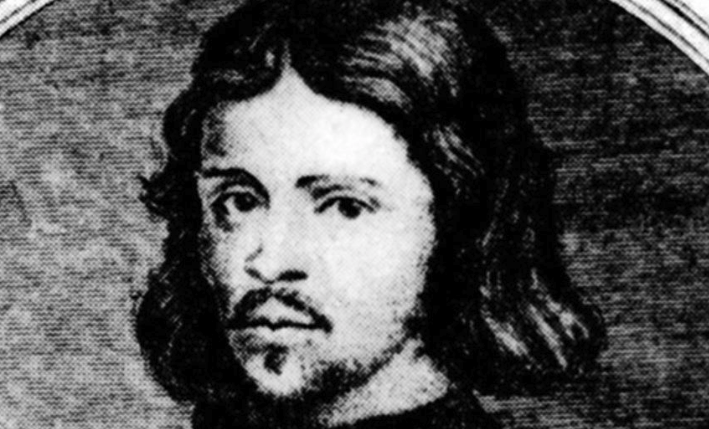Once upon a time, there lived a composer called Thomas Tallis. He was a bit good. Born during the reign of Henry VII he was busily composing music while Henry VIII was busily chopping off spousal heads. His music has survived for hundreds of years and lingers on in hymns that are still sung in church today. Recognise this?
It’s called All praise to Thee My God. We sang it in the school choir in the 1970s, and you still hear it in church today (those of you that attend regularly, that is.)
Tallis came from Dover in the chalk country of southeast England. A day’s horse ride up the road to the northwest is the City of Canterbury with its glorious cathedral, slap in the middle of England’s most fertile fruit and hop growing country. Little has changed in parts of rural England and I like to think he’d recognize the area today, although he’d probably get around in a nice, sensible Prius.
Tallis was one of the first composers to write votive music in the English language. He was -despite remaining a closet Catholic his whole life- in at the start of the ousting of the Catholic Latin liturgy which had kept an uneducated populace in the thrall of the priests for generations. Rome worked hard to keep the mysteries of the mass in Latin. Medieval.org has this to say about him:
“The composer lived in an England whose political and religious landscape was much more volatile than that of its 21st century counterpart. As monarchs changed – and Thomas Tallis saw four of them – so did the national faith. The pendulum swung from Catholic to Protestant to Catholic, and back to Protestant again. Both religions claimed numerous martyrs in defence of the “One True Faith;” kings and queens demanded different loyalties. And they also demanded liturgical music to fit the prevailing order of the day.”
He composed for whoever paid his bills, latterly Henry VIII. Some of his more famous works are featured on the CD, English Anthems, by the eponymous Tallis Scholars, which is one of the finest recordings of any genre of music that I know.
Much later, the early 20th Century English composer Ralph Vaughan Williams (pronounced “Rafe” in that annoyingly upper-class English way) took one of Tallis’ short songs and used it as the foundation for his spectacular romantic string piece “Fantasia on a Theme by Thomas Tallis”, composed in 1910. The original tune, known as the Third Tune from Archbishop Parker’s Psalter was written in 1567. Take a listen to the original and then immerse yourself in the Fantasia at the link below.
The Guardian described the link between the two compositions as “time travel enacted in music, a temporal bridge between the Tudors and the modern Edwardians.” Works for me.
Vaughan Williams’ piece does sympathetic justice to Tallis’ work. With consummate skill, he weaves it into his own gloriously original 17-minute work. The romantically patriotic Edwardians, sliding inexorably towards the muddy horrors of world War 1, must’ve loved it. Much like “The Lark Ascending”, one of Vaughan William’s more shamelessly English pieces, I’ve always felt that the Fantasia is deeply evocative of the English country side. And derived from a tune written in golden age of Henry VIII, one of England’s strongest monarchs, to boot. Gorblimy guv, what’s not to like?

The Fantasia kicks off with the double bass playing snippets of the original melody, which is then fully taken up by the cellos, before the introduction of a series of related, but clearly modern, variations. Hearing Tallis’ song quoted by the bass makes it sound almost sinister, a bit funereal perhaps, and nothing like the original vocal piece.
“The theme is heard in its entirety three times… but the music grows from the theme’s constituent motives or fragments, with variations upon them. A secondary melody, based on the original, is first heard on the solo viola about a third of the way into the Fantasia, and this theme forms the climax of the work about five minutes before the end.” https://en.wikipedia.org/wiki/Fantasia_on_a_Theme_by_Thomas_Tallis
You may recognise the piece from the soundtrack to the nautical adventure, Master and Commander, which starred Russel Crowe as the Royal Navy Captain Jack Aubrey, hunting down and capturing a rogue French Privateer. The music works well against the backdrop of the deep ocean seascapes, although the story is set over a hundred years before the Fantasia was composed.
Tallis is remembered in part for breaking free of the influence of Rome; finding a more English voice for his polyphonic music. In much the same way, Vaughan Williams was one of the first British composers to move away from German-influenced classical music, the stylistic stamp that Mozart, Beethoven, Haydn, Bach and their ilk put on European music.
Unlike Tallis though, Vaughan Williams was an atheist, softening towards agnosticism in his later years. But despite his lack of faith, he had no hesitation dipping in to the bible texts for inspiration for his choral music and songs.
It took me a while to warm to Vaughan Williams. At grammar school, I took O-level music, scoring a modest C grade in 1979. That year’s chosen period of music was classical music 1850 to 1950. We spent an inordinate amount of time on Stravinsky (The Rite of Spring), Stockhausen -who’s early experiments with electronic music sounded to me like an old radio in an empty oil drum being cut up with a chain saw- and Mahler, never the happiest of composers. They weren’t my cup of tea, really, any of them. I don’t remember much discussion about Vaughan Williams other than a slightly derisory sideways glance by the curriculum at the romantic period of English music in the early 20th century. Perhaps this reflects how this very English style, dismissed by one critic as “cowpat pastoralism”, fell out of favour in the mid 20th Century.

In the end, I was led willingly to him by my love for Thomas Tallis’s music, a composer whose power and influence remain strong five centuries later. After his death in 1585, he was buried in Saint Alfege’s church in Greenwich but the location of his grave is unknown. There is some evidence that his bones, along with those of others, were ingloriously chucked away by labourers rebuilding part of the church in the early 18th Century. An ignominious end to a glorious artistic life, but he’d probably get a chuckle at the thought of a local stray dog scampering off down the alley chewing on his thigh bone…


